GDLS and AeroVironment presented robots with loitering ammunition
Now in the United States, a number of land-based robotic systems are being actively developed. On these platforms, it is proposed to build equipment for various purposes, incl. carriers of unmanned aerial vehicles and loitering ammunition. An interesting project of this kind was recently presented by General Dynamics Land Systems (GDLS) and AeroVironment.
Unmanned collaboration
GDLS and AeroVironment announced an unmanned technology collaboration in October 2018 as part of the US Army Association's Annual Conference. At the same time, the first fruit of joint work was presented - the Stryker A1 armored personnel carrier with its own UAV, designed to increase situational awareness. The companies also said that they are planning to develop a number of new samples, incl. a self-propelled system with the Switchblade series loitering ammunition, created in AeroVironment.
At last year's Conference, GDLS publicly debuted the future Tracked Robot 10-Ton (TRX) robotic platform for the first time. Later she was sent for comparative tests as part of the army program RCV-M. According to the test results, the military considered another RTK more successful, but GDLS continued to develop its project.
At the recent AUSA-2021 conference, GDLS demonstrated the results of a full collaboration with the AeroVironment announced earlier. The promising RTK is made on the TRX platform and carries a special superstructure in which a reconnaissance UAV and a large number of loitering ammunition are hidden.
In addition, a promotional video has been published showing a prototype RTK with a different configuration of launchers. By its design, this option is simpler than a real prototype, but differs from it in reduced capabilities and less ammunition.
"10 ton robot"
The promising TRX robotic platform was developed by GDLS based on the older MUTT RTK project. The original project was finalized with an increase in the size, weight and carrying capacity of the machine, and also used a newer component base and relevant solutions in the field of control systems.
The TRX is a medium sized tracked chassis with a maximum weight of approx. 10 t. A hull with simple contours has been developed, with a wide flat roof to accommodate loads or target equipment. The payload mass reaches 450 kg.
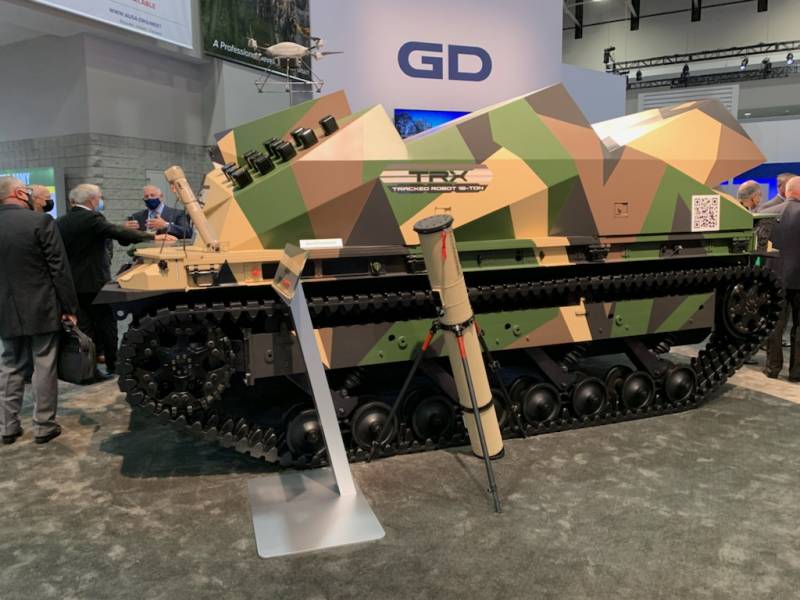
RTK and its weapon. On the wing is TPK with drone Switchblade 300, TPK Switchblade 600 is standing next to the machine
TRX is equipped with a hybrid power plant based on a diesel engine, batteries and electric motors. Its characteristics are sufficient to ensure high mobility on the ground, as well as to power the platform systems and payload. The undercarriage has eight pairwise interlocked road wheels per side. The balancer of each pair of rollers is connected to its own spring.
On the fore and aft sections of the cargo platform, there are video cameras and lidars. This equipment is embedded in the structure of the platform, does not go beyond its limits and does not interfere with loading. A highly efficient autonomous control system with elements of artificial intelligence has been developed. It collects various information from sensors and controls motion or payload.
The RTK can work completely independently or on the operator's commands while maintaining some autonomy. Communication with the operator is maintained via a two-way radio channel. Devices Robot-platforms also take over the transmission of commands and data exchange with the target or combat load.
The flat roof allows you to transport a variety of goods or mount special equipment, incl. weapons. TRX has already been tested as a transport for small containers. A set of engineering equipment with a dozer blade and a multipurpose boom has also been developed. Two variants of light UAV carriers have been proposed.
New combat load
A simplified version of the complex with loitering ammunition provides for the use of a target load in container equipment. As shown by GDLS, in this case, two container launchers with six Switchblade 300 small UAVs launched forward are placed in the nose of the platform. Behind them are three containers with eight larger Switchblade 600s each. They are launched sideways.
The exhibition demonstrates a more interesting version of the RTK with enhanced capabilities and a characteristic exterior. He received a full-fledged superstructure of a complex shape with many faces and protruding elements. All the necessary devices are hidden inside it - first of all, tubular TPK with ammunition.
In the front part of the superstructure, in the center, there is a compartment with a double-leaf cover for accommodating a drone-quadcopter. Its purpose has not been specified. Such a UAV can solve the tasks of additional visual reconnaissance at a stop or on the move. In addition, it could perform the functions of a repeater, increasing the range of the complex.
On the sides of the quadcopter compartment there are places for two "batteries" TPK compact ammunition Switchblade 300, 12 in each. The vehicles are launched into the front hemisphere. In the center and aft of the superstructure, in characteristic protruding casings, there are two ramps, each of which holds 13 Switchblade 600 ammunition. They are launched backwards. The general ammunition load consists of 50 ammunition of two types.
Ammunition AeroVironment Switchblade 300 is a UAV with two folding wings with a flight weight of 2,5 kg. The electric motor allows you to stay in the air for up to 15 minutes. and attack targets at a distance of up to 10 km. Reconnaissance and targeting are carried out according to the commands of the operator, who receives a signal from the UAV camera. The target is hit by a small-sized light high-explosive warhead.
UAV Switchblade 600 is built according to the same scheme, but differs in increased size and weight of 15 kg. It can fly for 40 minutes. and move 40 km from the starting position. A more complex stabilized optical seeker is used. The warhead is a cumulative high-explosive.
Self-propelled battery
Reconnaissance and strike complexes of two new types on a common platform, developed by GDLS and AeroVironment, are still in the very early stages, but soon they are planned to be offered to the US Army. Whether the army will be interested in the original samples is unknown. The negative experience of RTK TRX in the framework of the RCV-M program does not yet allow us to show excessive optimism.
However, the proposed project is quite interesting, at least from a technical point of view. So, the TRX platform, despite losing in the army competition, shows fairly high characteristics and, in general, copes with its tasks. At the same time, it has a high carrying capacity - which made it possible to accommodate a large number of UAVs and related launchers, incl. together with the superstructure.
The combat load of the new RTK includes two types of loitering ammunition with different characteristics, which provides a certain flexibility in solving specific combat missions. The large size of the ammunition also provides well-known advantages. The "exhibition" version of the complex has an additional plus in the form of a separate reconnaissance UAV.
Combat vehicles of the two proposed modifications are quite capable of finding their place in the army and on the battlefield. They are capable of autonomously, without putting the operator at risk, to move around the terrain and go to a firing position. With the help of Switchblade products, the new RTK and its operator can perform visual reconnaissance of the terrain, as well as immediately hit targets found. In this case, the robot, moving away from the operator, increases the overall range of the system.
However, the new RTK from GDLS and AeroVironment faces the same problems as other developments in this class. Despite all the successes and progress of recent years in the field of automatic control systems, the TRX platform did not fully suit the army. Perhaps it needs further refinement, both independently and in conjunction with a new special load. In addition, all the components of the new complex depend on radio communications, which leads to certain risks and threatens not only efficiency, but also the very possibility of combat use.
Limited success
At least one of the two variants of the complex with loitering ammunition from GDLS and AeroVironment has already reached the stage of field tests. The second, in turn, is now shown to the military and industry peers. At the same time, the technique is still being demonstrated only on the tracks of the test site. Payload launches have not yet been shown or even conducted.
Thus, we can conclude that the project of the two companies is moving forward and is already ready for demonstration to the public and future customers. In the very near future, its development and refinement will be completed, after which the equipment will be able to participate in the relevant competitions and programs of the US armed forces. How successful such participation will be is still a question. Previous "successes" of the TRX project are not conducive to optimism.
- Ryabov Kirill
- General Dynamics Land Systems, AeroVironment
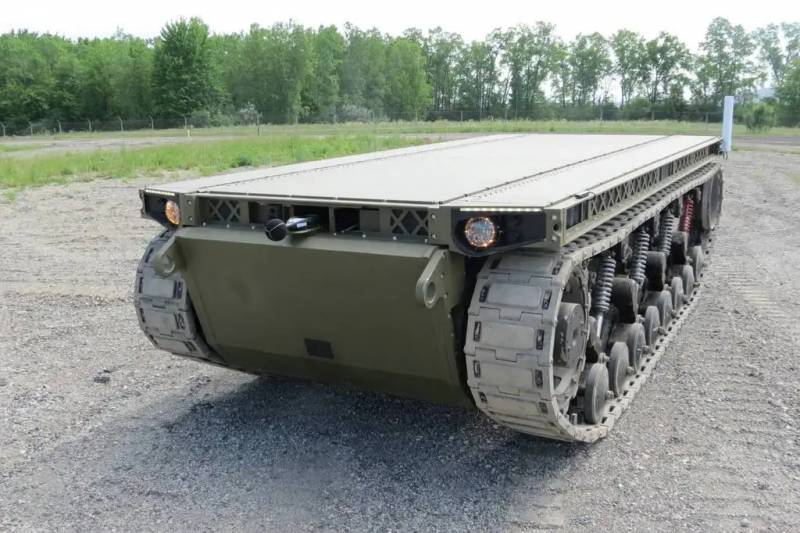
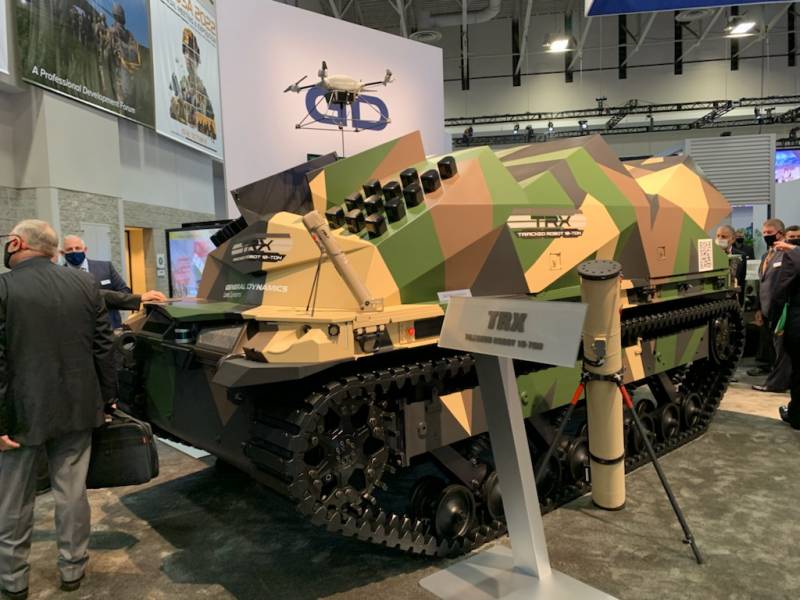
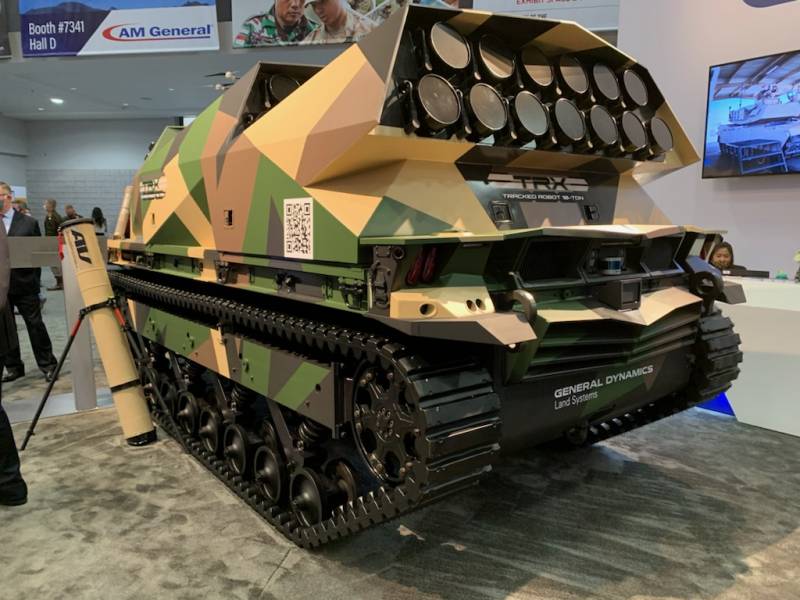
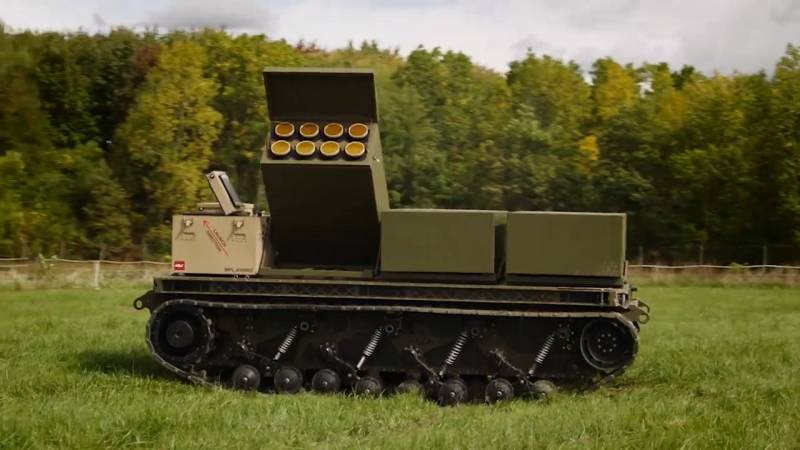
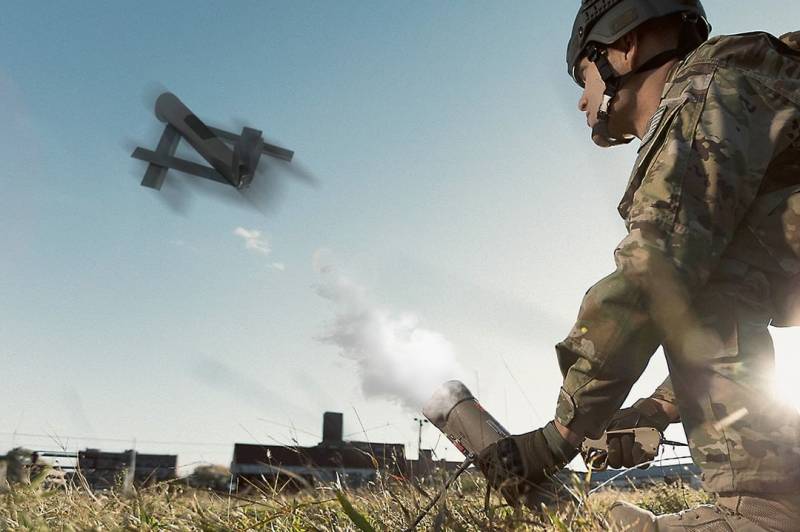
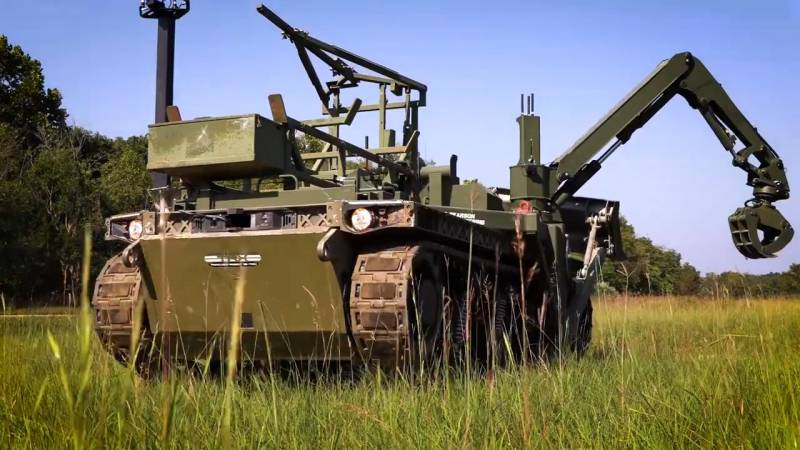
Information